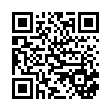Testing is Not A Dirty Word (PDF)
File information
Title: Microsoft Word - Testing is Not A Dirty Word
Author: Cal-Storm
This PDF 1.4 document has been generated by PScript5.dll Version 5.2.2 / Acrobat Distiller 15.0 (Windows), and has been sent on pdf-archive.com on 12/02/2016 at 18:42, from IP address 68.5.x.x.
The current document download page has been viewed 313 times.
File size: 1.19 MB (2 pages).
Privacy: public file


File preview
TESTING IS NOT A DIRTY WORD
Testing does not have to be difficult, especially if well prepped before venturing into the rain on your Risk
Level 2 and 3 job sites.
BEFORE HEADING OUT:
Make sure that your turbidity meter is charged, your calibration standards are not expired, and the
batteries on your pH meter are good.
CALIBRATE:
pH Meter
o Soak tip at least 30 minutes before testing or store in
deionized water
o Calibrate using buffer standards. pH buffer standards
are 4.0,7.0, and 10.0
Turbidity Meter
o Calibrate using your calibration standards before
heading out. Standards must be in the operating range
of your meter. Follow manufacturer guidelines for your
meter (Common Turbidity Meter Brands: La Motte,
Hach, Hanna, etc. )
IN THE FIELD:
You will need to take at least three samples at each outflow
location.
Tip: You do not need to do your test while in the rain.
Collect your samples using clean cups or water bottles
and test in your car or the warmth of your job trailer.
pH Testing:
o pH is very sensitive to temperature, testing needs to happen immediately.
o When testing, it may take a bit to equilibrate the meter.
o Note your readings
pH NALs: >6.5 and <8.5
o
Turbidity testing:
o Testing must occur immediately. The samples only
reflect a specific location at a specific time.
o Samples must be dried off before insertion into test kit.
o Note your results and run an arithmetic average.
Turbidity NALs: 250 NTU +
TALK ON WATER | FEB 2016
AFTER:
If you have exceedances with either/both pH and turbidity,
these numbers must be reported on your ad hoc reports and
submitted into SMARTS (10 day window for Risk Level 2, 5
day window for Risk Level 3). The numbers also serve as a
benchmark for action, so investigate what may be causing
the exceedances, and once found, apply a fix as soon as
possible, with testing to follow fixes. High pH could be
coming from an overfilled or improper concrete washout,
high turbidity could be coming from a blown out spoils pile,
etc. Being a great QSP means taking the time to identify
problems so they can be tackled effectively and efficiently.
HANDS ON TRAINING:
If you would like additional hands on training about stormwater testing techniques, please contact us about
joining us for one of our PDH classes in Orange County.
TALK ON WATER | FEB 2016
Download Testing is Not A Dirty Word
Testing is Not A Dirty Word.pdf (PDF, 1.19 MB)
Download PDF
Share this file on social networks
Link to this page
Permanent link
Use the permanent link to the download page to share your document on Facebook, Twitter, LinkedIn, or directly with a contact by e-Mail, Messenger, Whatsapp, Line..
Short link
Use the short link to share your document on Twitter or by text message (SMS)
HTML Code
Copy the following HTML code to share your document on a Website or Blog
QR Code to this page

This file has been shared publicly by a user of PDF Archive.
Document ID: 0000339622.